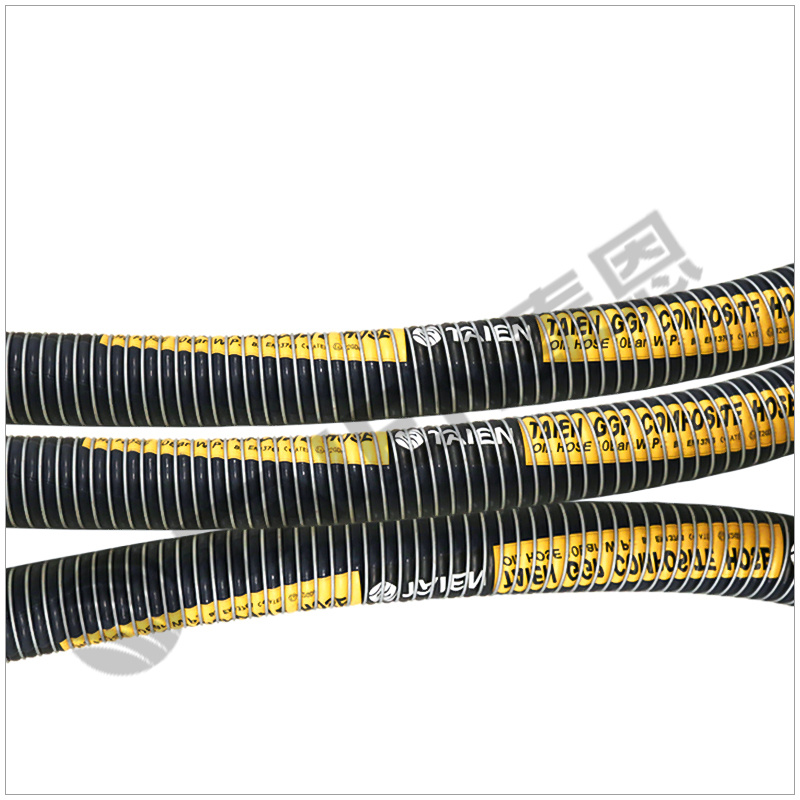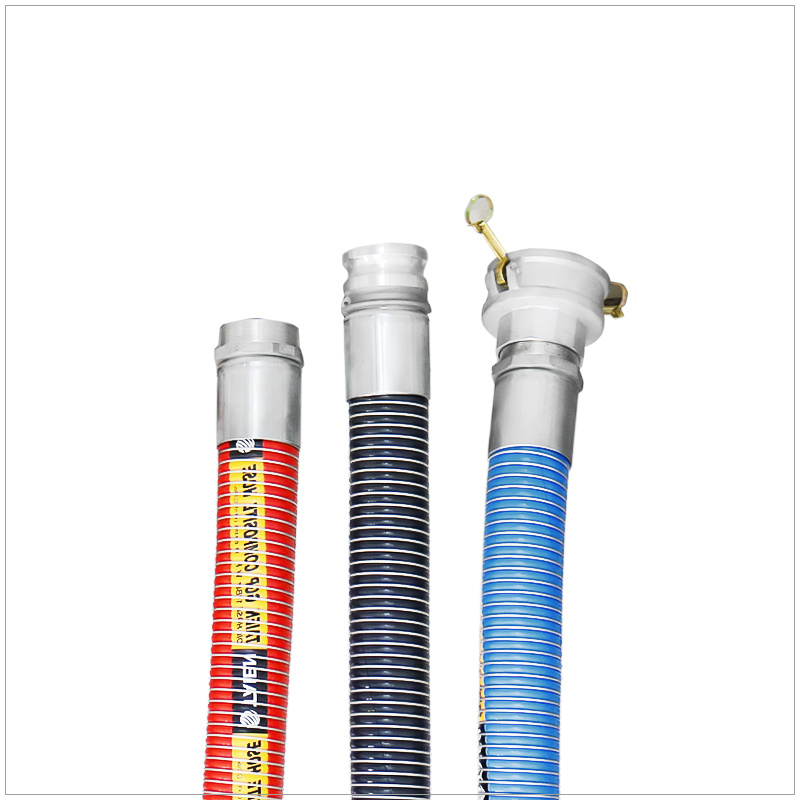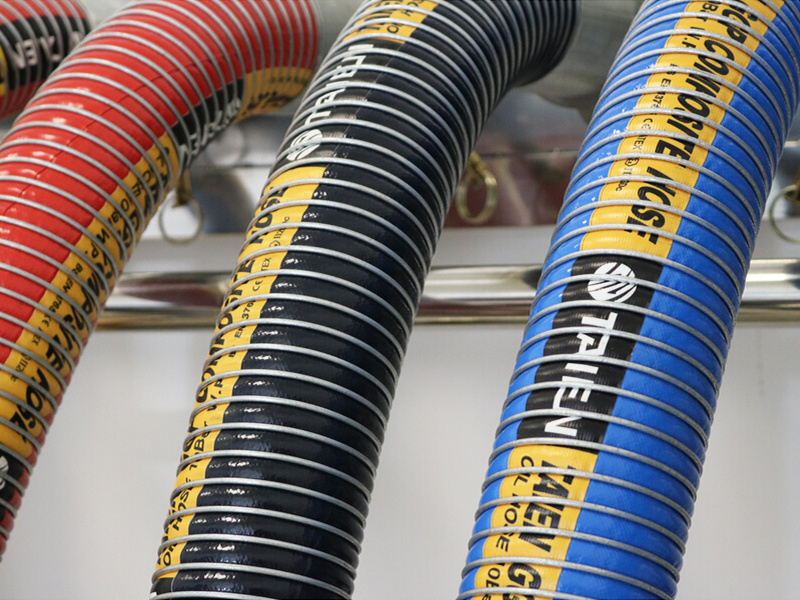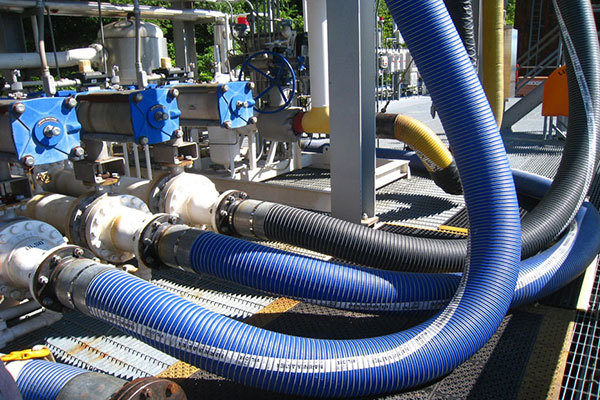Comprehensive Guide to Frequently Asked Questions About Oil Hoses
Release time:
2025-06-01
Author:
Source:
Abstract
Frequently Asked Questions About Oil Hoses
Introduction to Oil Hoses
Oil hoses serve a vital function across various industries, facilitating the safe and efficient transfer of oil and other fluids. Understanding the design, applications, and maintenance of these hoses is essential for professionals and hobbyists alike. This article answers common questions about oil hoses, providing you with the
Frequently Asked Questions About Oil Hoses
Introduction to Oil Hoses
Oil hoses serve a vital function across various industries, facilitating the safe and efficient transfer of oil and other fluids. Understanding the design, applications, and maintenance of these hoses is essential for professionals and hobbyists alike. This article answers common questions about oil hoses, providing you with the knowledge to select and maintain them effectively.
What Are Oil Hoses?
Oil hoses are specialized tubes designed to transport oil, petroleum-based fluids, and other substances within various systems. They are constructed from durable materials that can withstand high pressures and resist degradation from chemicals and oils. The primary purpose of an oil hose is to ensure a leak-free delivery of fluids, maintaining the integrity of machinery and equipment.
Types of Oil Hoses
Different types of oil hoses are available, each tailored for specific applications:
1. Rubber Oil Hoses
These hoses are made from synthetic rubber, offering excellent flexibility and resistance to oil and heat. Ideal for low to medium-pressure applications, they are commonly used in automotive and industrial settings.
2. PVC Oil Hoses
Polyvinyl Chloride (PVC) hoses are lightweight and resistant to abrasion and chemicals. They are suitable for low-pressure applications and are often used in agricultural settings.
3. Stainless Steel Braided Oil Hoses
These hoses feature a stainless steel braided exterior, providing enhanced durability and resistance to high pressures. They are commonly used in performance vehicles and heavy machinery.
4. Fuel Oil Hoses
Designed specifically for transporting diesel and fuel oils, these hoses are resistant to the corrosive effects of petroleum products. They are often used in fueling systems and storage tanks.
5. High-Temperature Oil Hoses
Specially designed to withstand extreme temperatures, these hoses are constructed from materials that can endure high heat without degrading. They are used in applications where oil is subjected to high thermal conditions.
What Are the Common Applications of Oil Hoses?
Oil hoses are utilized in various industries and applications, including:
- **Automotive**: Oil hoses are essential for engine oil delivery, cooling systems, and fuel systems in vehicles.
- **Industrial Equipment**: Many machines use oil hoses for hydraulic systems, lubrication, and fluid transfer.
- **Agricultural**: Oil hoses are used in equipment like tractors and harvesters for fuel and lubrication.
- **Marine**: Boats and ships rely on oil hoses for fuel transfer and lubrication systems.
How Do I Choose the Right Oil Hose?
Selecting the right oil hose depends on several factors:
1. Identify the Application
Understanding where and how the hose will be used is crucial. Different applications may require specific types of hoses based on pressure, temperature, and fluid type.
2. Consider the Fluid Type
Not all hoses are compatible with every type of oil. Ensure that the material of the hose is suitable for the specific oil or fluid you intend to use.
3. Assess Pressure Ratings
Every oil hose comes with a pressure rating indicating its maximum operating pressure. Choose a hose with a rating that exceeds the pressure requirements of your application to ensure safety and longevity.
4. Evaluate Temperature Resistance
Consider the temperature range that the hose will be exposed to. Select a hose that can handle both high and low temperatures as necessary.
What Are the Signs of Oil Hose Wear and Tear?
Regular inspection of oil hoses is essential to maintain their integrity and prevent failures. Look for these signs of wear:
- **Cracks or Splits**: Visible damage can lead to leaks and should be addressed immediately.
- **Brittleness**: If the hose feels brittle or inflexible, it may be time for a replacement.
- **Discoloration**: Changes in color or texture can indicate exposure to harmful chemicals or overheating.
- **Leaks**: Any sign of fluid leaking from the hose should prompt an immediate inspection and potential replacement.
How Can I Maintain My Oil Hoses?
Proper maintenance can extend the life of your oil hoses significantly. Consider the following tips:
1. Regular Inspections
Inspect hoses regularly for signs of wear, damage, or leaks. Address any issues as soon as they are detected.
2. Clean the Hoses
Debris and contaminants can clog hoses and affect performance. Clean them periodically using appropriate methods for the material type.
3. Store Properly
When not in use, store hoses in a cool, dry place away from direct sunlight and extreme temperatures. This prevents degradation and extends their life.
4. Replace When Necessary
If a hose shows signs of significant wear, it’s better to replace it than risk a failure that could lead to equipment damage or safety hazards.
Can Oil Hoses Be Repaired?
While some minor damage can be repaired, such as small leaks or tears, it is often recommended to replace oil hoses entirely, especially if they are critical to safety or performance. Repairing a hose may compromise its integrity, especially under high pressure or temperature.
What Are the Safety Precautions When Working with Oil Hoses?
Safety should always be a priority when handling oil hoses. Follow these precautions:
- **Use Protective Gear**: Always wear gloves and goggles while working with oil hoses to prevent skin contact and protect your eyes from splashes.
- **Check for Leaks**: Before using a hose, check for leaks. If you find any, do not use the hose until it is repaired or replaced.
- **Avoid Overpressurization**: Ensure that the operating pressure does not exceed the hose’s rated capacity to prevent bursts or failures.
- **Keep Work Areas Clean**: Oil spills can create hazardous conditions. Keep work areas clean and free from hazards to ensure safety.
Frequently Asked Questions (FAQs)
1. How long do oil hoses typically last?
The lifespan of an oil hose can vary widely based on usage, environment, and material. Generally, a well-maintained oil hose can last between 5 to 10 years.
2. Can I use an oil hose for other types of fluids?
While some hoses are versatile, it’s essential to check compatibility with the specific fluid you intend to use. Using the wrong hose can lead to degradation and failure.
3. How do I know if my oil hose is rated for high pressure?
Each oil hose has a marking on it that indicates its pressure rating. Always consult the manufacturer’s specifications for this information.
4. Are there specific regulations for oil hoses in industrial settings?
Yes, there are regulations concerning the use of oil hoses in industrial environments. Check local and national safety standards for guidelines related to fluid transport.
5. What should I do if I notice a leak in my oil hose?
If you detect a leak, immediately stop using the hose and inspect it for damage. Depending on the severity of the leak, you may need to repair it or replace the hose entirely.
Conclusion
Understanding oil hoses is essential for anyone involved in industries that rely on fluid transfer systems. By familiarizing yourself with the types, applications, maintenance practices, and safety precautions surrounding oil hoses, you can ensure that your equipment operates efficiently and safely. Regular inspections and proper handling will prolong the life of your hoses, ultimately leading to better performance and reduced costs. Whether you are a professional or a DIY enthusiast, this comprehensive guide serves as an invaluable resource in navigating the world of oil hoses.
Recommended Reading














